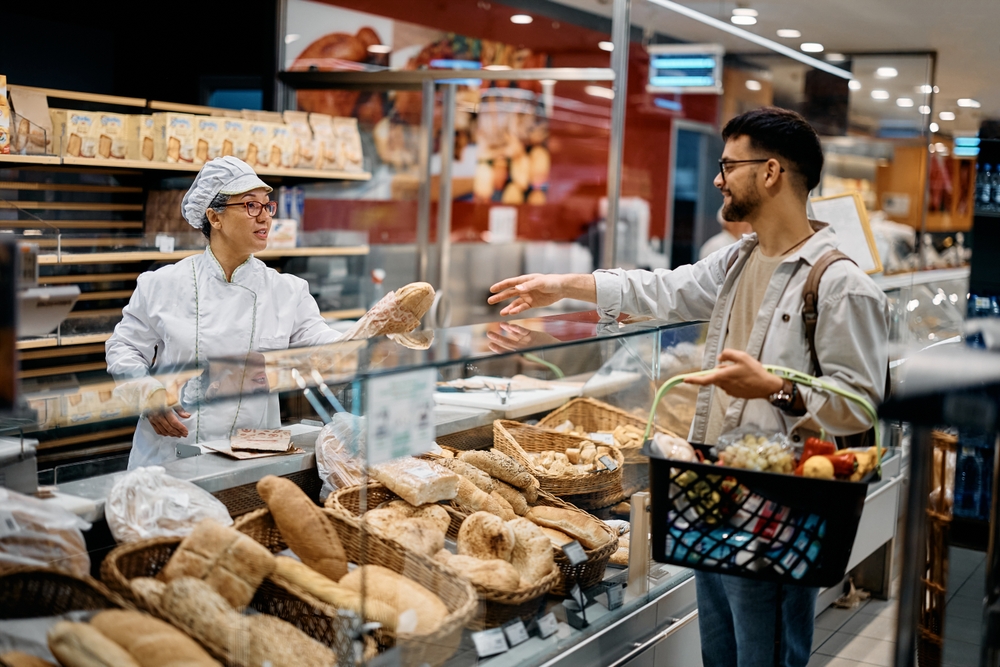You enter the grocery store for one item—maybe milk, maybe sandwich bread—and suddenly you’re walking out with a scented candle, three types of cheese, a seasonal pastry that absolutely was not on your list, and a feeling of confused yet satisfied victory. Grocery stores are not chaotic by accident. They are carefully engineered environments designed to guide you, tempt you, and tease your senses into spending more than you planned.
These layouts aren’t just random shelves—they’re psychological playgrounds. Once you understand how the game is played, you start to see just how brilliantly sneaky these designs really are.
1. The Produce-First Strategy
You may think the colorful produce section at the entrance is a simple welcome mat for shoppers, but it’s actually a mood-setting stage. Bright fruits and vegetables make you feel healthy, capable, and responsible. That healthy glow gives you subconscious permission to buy less healthy treats later—because hey, you started strong. The freshness, lighting, and misting systems are all there to entice your senses, making everything feel lush and irresistible. Before you even realize it, you’re rolling into the next aisle with a glowing sense of virtue and a cart ready for indulgence.
2. The Bakery at the Front
That sweet, warm smell of fresh bread isn’t just a coincidence—it’s a strategy. The bakery is often placed near the entrance, so the scent is one of the first things you experience. Smell is a powerful emotional trigger, and bakeries use it like a charm spell. Once you inhale that warm yeast-and-sugar air, you are softened, relaxed, and psychologically open to indulgence. And yes, that’s why you always leave with pastries you absolutely did not need.
3. The Giant Floral Display
Flower displays at the front of the store are more than just a pretty decoration. They are there to signal freshness, luxury, and abundance. Seeing fresh flowers puts shoppers in a positive emotional state, making them feel like everything in the store is high-quality. Positive emotions increase spending behavior, often without people realizing it. The flowers are effectively emotional stage lighting, framing the scene before you start your shopping journey.
4. Essentials Are Placed at the Back
Milk, eggs, and bread—the items people most commonly come in for—are rarely near the front. Stores intentionally place them deep within the layout to force you to walk past dozens of other products first. The longer you spend wandering, the more likely you are to make impulse purchases. Every colorful box, tasty sample, or limited-time display has a better chance of catching your eye. That single jug of milk becomes a cart of unpredictable adventure quickly.
5. The “Treasure Hunt” Middle Aisles
Some stores arrange certain aisles like mini treasure hunts, especially for seasonal products or specialty items. These displays change often, increasing the curiosity factor each visit. Shoppers may not need anything there, but the possibility of a new discovery is irresistible. Curiosity leads to browsing, and browsing leads to cart-loading. It’s not accidental—it’s engineered delight.
6. End Caps Designed to Entice
End caps—the displays at the ends of aisles—are prime impulse purchase real estate. They highlight items that seem like deals, whether or not they actually are. Because they’re easy to reach and visually spotlighted, shoppers are drawn to them like moths to a bright, discount-flavored flame. Even items you never planned on buying suddenly look interesting when placed here. The layout quietly whispers: “Just grab it. It’s right there. Why not?”
7. The Free Sample Serenade
Free samples aren’t just generosity—they are a psychological play on reciprocity. When someone gives you something, you naturally feel inclined to give something in return. In this case, the return is buying the product. Stores place sampling stations near new or high-margin products to encourage trial. Before you know it, that tiny cheese cube turns into a whole wedge in your cart.
8. Checkout Lane Temptations
The checkout lane is a final, carefully curated temptation gauntlet. Candy, drinks, gum, lip balm, novelty snacks—they’re all placed at arm’s reach to catch last-second impulses. These items are small, low-cost, and often emotionally appealing after the mental marathon of grocery shopping. It’s the “I deserve this” section. And trust me, stores know exactly how many times you’ll say yes.
9. Wide Aisles That Slow You Down
Grocery stores design aisles to control the speed at which you move. Wide, calm aisles encourage wandering and exploring. They create a sense of comfort and abundance, making shoppers linger longer. The more time you spend, the more you see. And the more you see, the more you buy.
10. The Seasonal Section Trap
Seasonal sections are often placed in the center of the store or near the entrance. They provide a rotating sense of novelty, encouraging impulse excitement. Whether it’s pumpkins, grilling accessories, or holiday candy, these products tap into emotions tied to celebration and nostalgia. Emotional spending is one of the strongest forms of spending. These displays don’t just sell goods—they sell vibes.
Now That You Know, Will You Resist?
Grocery store layouts are brilliant, subtle, and surprisingly persuasive. Once you understand how they influence your senses and emotions, you begin to see your cart in a different light. But awareness is only the first step—resisting impulse spending is a lifelong dance.
Did any of these layouts surprise you? Share your thoughts, experiences, or grocery store confession stories in the comments below.
You May Also Like…
- 10 Grocery Store Tricks That Make You Forget What You Came For
- 7 Sneaky Tricks That Make You Overspend at Grocery Stores
- Why Do Some Families Still Struggle With Basics Like Grocery Bills?
- 6 Strange Ways Grocery Stores Use Psychology to Make You Overspend
- 8 Items You Bought at the Grocery Store That Are Being Repackaged as “Wellness”



Leave a Reply